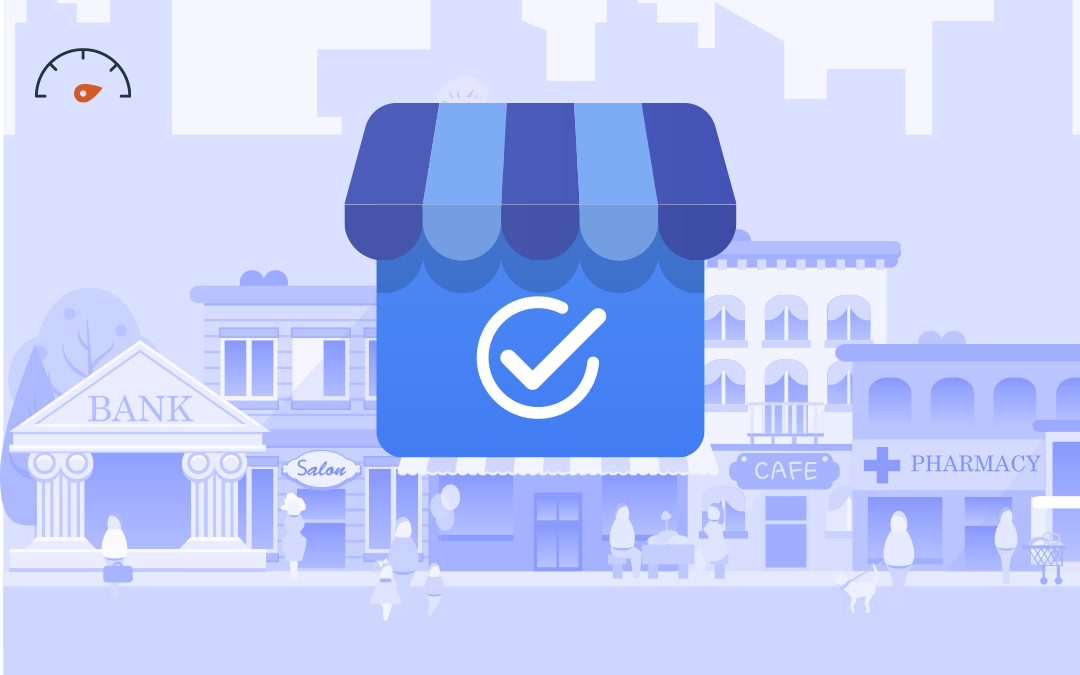Your website is often the best way for customers to find information about your business. In order to share this information with customers and drive more conversions, you have to first increase traffic to your website. Here is how to drive more users to your website through various marketing channels.
- How to Increase Website Traffic With Content Marketing
- How to Increase Website Traffic With Email
- How to Increase Website Traffic With Local Citations
- How to Increase Website Traffic With Paid Advertising
- How to Increase Website Traffic With SEO
- How to Increase Website Traffic With Social Media
How to Increase Website Traffic With Content Marketing
Content marketing is one of the best ways to drive traffic to your website because of its versatility. Whether you’re creating website copy, blog posts, videos for social media, or any other online materials that link back to your website, your business is using content marketing to send people to your site.
Besides being versatile, it’s also free and highly effective for local businesses who want to reach more customers, increase brand awareness, and become an authority in their community. Follow the below content marketing strategies to get more traffic to your website.
Start a Small Business Blog
Blogging isn’t right for all businesses, but if your local company has
- A variety of topics relevant to your product, service, audience, or process;
- The time and resources to produce consistent, quality blog posts;
- And realistic business goals that could be supported by a blog, like driving website traffic,
creating a small business blog could be your best option.
To effectively increase traffic to your website using a blog, your local business should focus on writing posts that are unique, relevant, and helpful to your target audience. When search engines and online publishers recognize that your content fulfills these criteria, they’re more likely to link to your posts or show them in search results. These opportunities get your business in front of more potential customers, making you one step closer to converting people on your website.
Just remember to have a strategic internal linking structure within your blog posts. It should be easy for visitors to move from your blog posts to your webpages that actually drive conversions, like your service pages or contact form.
And if your business already has a blog but you’re still looking for ways to increase website traffic, run a content audit to catch any duplicate, thin, and outdated content that could be holding your website back. You’ll want to remove or reoptimize low-performing blog posts and consider techniques like topic clusters and pillar pages for your website.
Try Guest Blogging
Guest blogging is exactly as it sounds—authoring a post for another blog. Its primary benefit is increasing your website traffic. When you write posts for others, you can include links back to your own site for a wider audience to engage with.
To get started with guest blogging, you should pitch to other local businesses that feature topics related to your industry or services. To sweeten the deal, offer to feature content from them in return.
For instance, if you’re a local vegan cafe who promotes healthy lifestyle habits, you might partner with another company in the health and wellness category, like a fitness center. You could write “15 High-Protein Vegan Recipes for Strength Training” for the gym, while they publish “What to Eat on Rest Days vs. Training Days” to your blog.
Draft Press Releases
Sharing news about your business is a great option for generating buzz about your brand and enticing people to visit your website. Whether you’re opening a new location or releasing new products or services, free publicity that lands people on your site is a win.
Try sending your press release to contacts at local news stations. It isn’t guaranteed that any of them will pick up the story, but if they do, your business could be featured in an article online or on TV, with links back to your website that drive more web traffic.
Create Short-Form Videos
Not all content has to be a written document. Short-form video is the most engaging form of social content that drives website traffic. Videos can take visitors from social media platforms like YouTube, Instagram, TikTok, and Facebook or organic search results to your site.
If you’re a service-area business like a plumber, you might create videos about how to unclog a sink or flush a water heater, while a dental office could record instructions for kids to correctly brush their teeth.
When posting videos to your social media channels, just be sure to include your website in your profile or in the post description.
Repurpose Your Content
You can and should use your business’ content marketing efforts in more ways than one. Blog and video content ideas can be reused for effective social media posts and email newsletters.
To make this repurposing content strategy even more effective, link your original blog post or webpage video in your social media posts and emails so that you’re always increasing traffic to your website, even on old work.
How to Increase Website Traffic With Email
Email marketing is a proven strategy for driving consistent traffic to your website. After growing your email subscriber list, you can share information with the people who have already shown they’re interested in your business. Emails can bring interested customers back to your website and lead to conversions. Here is how to leverage email to drive more website traffic.
Send a Weekly Newsletter
If someone subscribed to your email list, they likely did so in order to hear more about your company, so give potential customers and repeat buyers what they want. Sending a weekly newsletter to your email list keeps customers updated on your business’ news, especially if you’ve recently added new products or services.
Your emails need to include links to your blog posts or landing pages so subscribers can easily visit your site. Your links should be accompanied by a short blurb that does enough to spark readers’ curiosity and give context without revealing so much that they have no reason to follow the link.
Focus on Behavior-Triggered Emails
Links to limited-time promotions or retargeting emails reminding customers of abandoned items in their cart also drive website traffic by adding a level of urgency.
Unlike your weekly newsletter, you shouldn’t save the most impactful information for your website. You want the reader to be excited and engaged enough to click the link to redeem their prize. So, include what the promotion is and how it’s beneficial to the reader in the content of your email. But make sure the user has to visit your website in order to use the promotion.
How to Increase Website Traffic With Local Citations
Local citations help small businesses show up in local search results. Without a local business listing, it’s incredibly difficult to rank for more general, high-volume searches like “restaurants near me” or “best yoga studios in St. Louis.”
But with a well-optimized local citation that links your website, you stay visible in local search results like these and boost your website traffic.
Prioritize Google Business Profile
Since a majority of website traffic begins with search engines, you want to compete on the one with the largest market share by far—Google.
Creating or claiming your Google Business Profile (formerly Google My Business) for all your business locations is just the first step, though. More website traffic will come from updating your NAP (name, address, phone number) data and routinely managing these aspects of your profile:
- Primary and secondary business categories
- Business description
- High-quality photos
- Linking the correct website page or location page
- Google Posts
By giving these continual attention, you’re communicating accurate, useful information about your business and encouraging customers to click through to your website. Plus, a more complete profile improves your chances of appearing in the Google Map Pack, a special feature that appears at the top of search results that’s clicked on by nearly half of all searchers.
Pay Attention to Other Local Citation Platforms
Even though Google Business Profile is the most important local business directory for improving website traffic, many local citations platforms like Yelp and TripAdvisor can also achieve that goal.
These review platforms help local businesses build brand reputation. Reviews can be the tipping point that convinces prospective customers to engage with your business. In other words, the more that potential customers trust your company, the more willing they’ll be to explore your site and choose to do business with you.
We recommend requesting reviews on these platforms over time to show that your business is running healthily and responding to reviews to prove that you care about your customers’ feedback.
How to Increase Website Traffic With Paid Advertising
While organic marketing strategies are preferable for saving money, paid advertising strategies can be more effective at boosting website traffic since they push your content in front of more new customers. Paid advertising works on search engines, social media, and other businesses’ websites. Here are a few paid advertising techniques to get more website visitors.
Craft Strong Calls to Action
You can structure your ads with good call to action buttons like “Sign Up & Save” or “Try for Free” that prompt consumers to visit your website.
Just make sure your CTAs are accurate to the page they link to. For example, a “Buy Now” button should link to a product sale page or shopping cart, rather than a general website page.
Set Up Retargeting Ads
Retargeting ads are particularly good for driving website traffic since they focus on consumers who have a history of interacting with your business. These people most likely won’t need as much convincing to visit your website if they’ve already shown an interest in your products or services.
You can send emails to customers who abandoned their online cart or use website browsing data to see who has visited your webpages or social media accounts and target them on those channels to get them back on your site.
Get Involved in Affiliate Marketing
Affiliate marketing is another paid advertising strategy that helps drive traffic to specific product pages. Your business can pay a small commission to creators who advertise your products and get users to visit your website, make a purchase, or sign up for your services.
Since driving website traffic is one of the main ways your affiliate gets paid, there’s more motivation to do so.
Hold a Giveaway or Contest
New and returning customers will always look for deals. Your small business can drive traffic to your website by holding a promotional giveaway or contest for free items or a percentage off their purchase.
This tip for driving website traffic can also have the added benefit of helping you collect the contact information of more prospective customers if you use a sign up form with an email entry.
How to Increase Website Traffic With SEO
A website that’s optimized for organic search has a better chance of ranking higher in SERPs (search engine results pages), meaning that more searchers will click through to your website. Below is how small businesses can use local SEO to send more traffic to their business’ website.
Do Simple Keyword Research
Keywords teach search engines what your website is about and when it should show you in results. All types of keywords are important, but small businesses often have the least competition and highest click-through rates when optimizing for long-tail keywords like “emergency electrician near me” or “where can I get my car serviced?” or “best sushi restaurant in Boston.”
There are plenty of free SEO tools that help out with keyword research, or you can use Google to identify keywords that your competitors are using.

Google also has a Related Search feature on organic search results to help you see how your audience is looking up your products and services. In the example below, searches for “cheap plumbers,” “emergency plumbers,” and “plumbers in nearby towns” all present optimization opportunities if you’re a local plumber.

The People Also Ask box on Google can also identify questions your audience needs answered—which you can add as FAQs to your website. For example, if you’re a car wrap installer and you search “car wrap,” the People Also Ask results reveals that people care about the cost, longevity, and type of wrap that you might use.
 Update SEO Titles & Schema Markup
Update SEO Titles & Schema Markup
Keyword-optimized SEO titles and other schema markup on your website helps you rank higher in search, makes your website listing in search results easier to read, and communicates exactly what searchers need to know about your business. All of these factor into driving more website traffic.
Make sure your SEO titles are between 50 to 70 characters and include:
- Your business name
- The title or topic of your page (with a main keyword)
- Locations you serve
- Competitive advantage or a unique selling point that’s important to your audience

In this example, the business optimizes for its location (Omaha) and the product/service (vacation rentals). The company also adds a unique element that’s important to searchers (the pricing details).
Along with your SEO title, a well-optimized meta description also drives website traffic. Meta descriptions should accurately and succinctly describe what your page is about. They should also be between 150 to 160 characters and use main keywords.

Optimize Your Location & Service Pages
Optimized landing pages, location pages, and individual service pages also help increase your website traffic by targeting specific services that consumers might be searching for and giving you more ranking opportunities.
Make sure you have individual pages on your website dedicated to each product or service your business offers.
Earn High-Quality Backlinks
A good backlink profile isn’t always easy to build, but backlinks are a great way to get more website traffic. Here’s what you might do to earn more inbound links as a small business:
- Influencer marketing
- Local citations in business directories
- Guest blogging
- Ask businesses you partner with to link to your site in their content
- Create original visuals like infographics
- Conduct original research
- Interview local experts
Focus on Website Performance
If your website has issues, it won’t rank well on search engines. If it can’t rank well, it’ll be much harder to get traffic to your website. Bad website performance also leads to a bad user experience, so even if customers end up on your site, they’re more likely to leave. Here’s what you need to do to ensure your site is performing well:
- Submit an XML sitemap to Google
- Fix broken links with redirects
- Follow ADA compliance
- Create a mobile-friendly version of your website
- Conduct page speed tests and reduce load times
- Ensure your site is secure
How to Increase Website Traffic With Social Media
A strong social media strategy helps your business engage more with customers and drives more website traffic. To be successful on social media, you need to post consistently, be on the best platforms for your business, add social share buttons to your content, and use the right calls to action that include links to your website. Below are more options for harnessing the power of social media to reach your website traffic goals.
Lean Into Influencer Marketing
Partnering with local influencers can expand your audience, and the content they post on your behalf will direct customers right to your website, similar to affiliate marketing.
Interact With the Community
Social media engagement plays a key role in driving website traffic for local businesses. By actively participating on social media—either by joining relevant Facebook groups, participating in public forums like Reddit or Quora, or promptly responding to your mentions—local businesses can foster a strong online community.
“To drive website traffic in a non-traditional way, you should be active in the community and create brand awareness by partnering with local businesses. This inspires people to search your business name. You can also implement QR codes on your physical marketing materials—like receipts, business cards, flyers, and other customer touchpoints—so they visit your website right away.” — Meghan Trapp, Senior Vice President of Hurrdat Marketing
Engaging with these platforms allows local businesses to showcase their expertise, provide valuable insights, and establish themselves as trusted sources in their respective industries. These interactions not only help build brand awareness but also encourage users to visit your website for more information or to make a purchase. By leveraging social media engagement, local businesses can tap into a wider audience and generate increased website traffic, leading to potential conversions and long-term customer loyalty.
Want help driving traffic to your website? Local Search Fuel by Hurrdat is designed to help small businesses grow with small business websites and Google Business Profile optimization services. Get started today!

Stefanie Vanderbeek
Stefanie Vanderbeek is a content strategist and writer who specializes in long-form digital content and website SEO optimization. Stefanie earned her Bachelor of Journalism from the University of Nebraska-Lincoln in Advertising and Public Relations in 2021. In her free time, you can find Stefanie reading, deep diving into video game lore, singing in her professional vocal group, or traveling the world!



